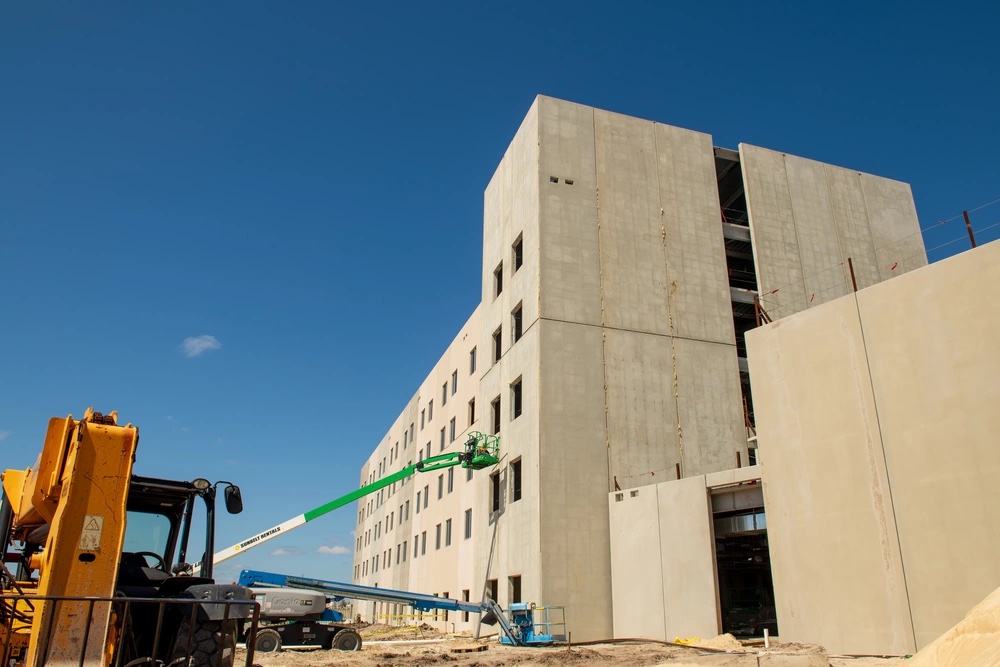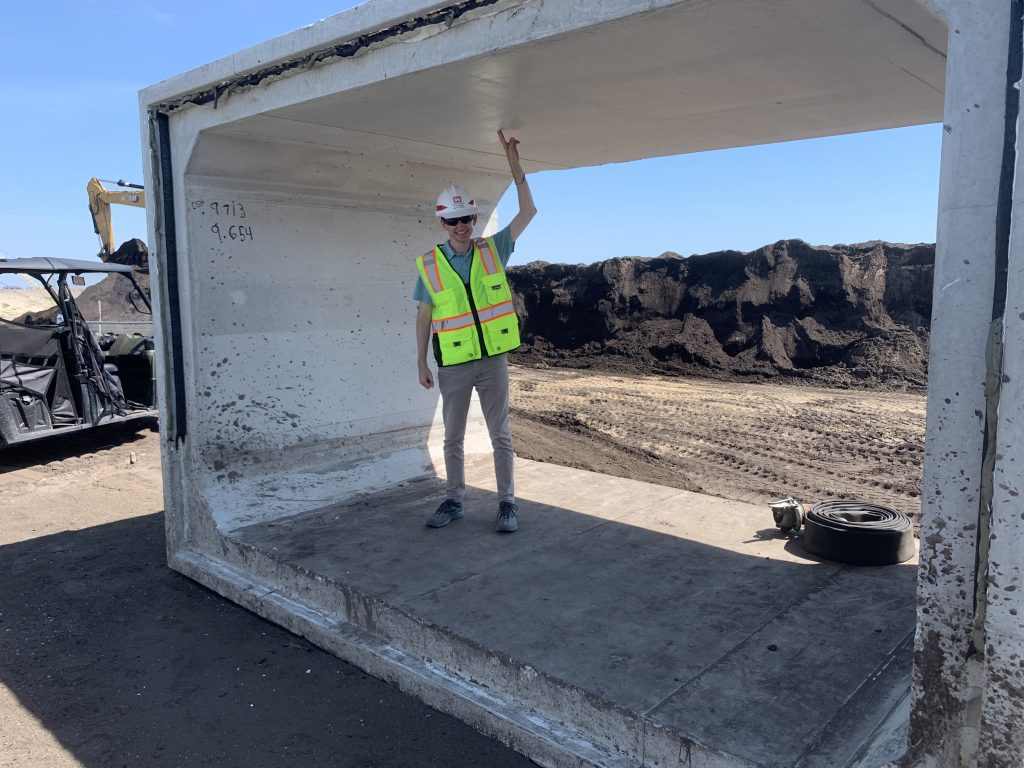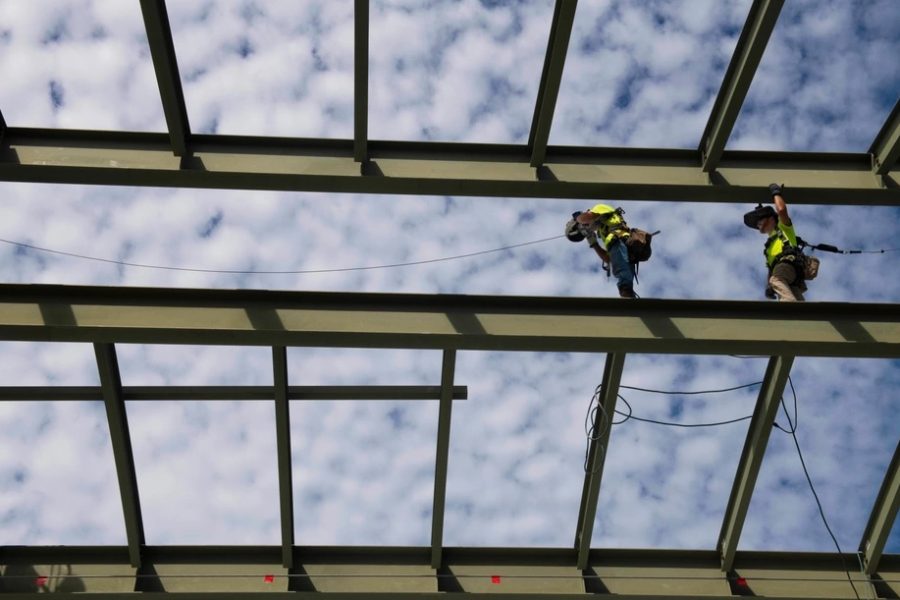Editor’s Note: This is the second of a two-part series on how Tyndall Air Force Base, Fla., is working to protect itself from future hurricanes. This installment covers Tyndall’s efforts to make facilities withstand future storms. Part 1, about the base’s nature-based coastal resilience projects, can be found here.
TYNDALL AIR FORCE BASE, Fla.—Five years after Hurricane Michael flattened Tyndall Air Force Base, Fla., the facility is being rebuilt as a model ‘Installation of the Future,’ complete with new buildings, new F-35A Lightning II fighter jets, and new technology to make the base safer, stronger, and more efficient than before.
Looming over the rebuild, however, is the threat of more hurricanes and severe weather. Just last year, another Category 5 storm in Hurricane Ian swept through Florida, though it mostly spared Tyndall, and scientists predict more tropical cyclones will reach very intense levels in the years to come.
In response, Tyndall is aiming to build its facilities back stronger to withstand even more punishment from future storms.
“It was an exceptional event,” Col. Robert Bartlow Jr., chief of the Tyndall-based Air Force Civil Engineer Center Natural Disaster Recovery Division, said about Hurricane Michael. “But as we’re rebuilding the base, we’re not treating this as an exceptional event. We’re treating this as the new normal.”

Wind Resistance
After Michael, Air Force engineers raised the bar for building standards at Tyndall, matching what they saw in Florida’s Miami-Dade County. Each new building is built to survive 165 mile-per-hour winds. And they’re adapting those standards to match the Air Force’s special needs.
“A lot of what’s down in Miami is commercial properties ,” said William Heiney, senior resident engineer for the Tyndall office of the U.S. Army Corps of Engineers, which oversees the day-to-day awarding of contracts and site management on the base. “We’re going to have some unique building elements. … If they don’t have an existing system that we can use, then [the building element] is designed, engineered, and stamped by a structural engineer to meet those requirements.”
To meet the 165 mph standard, some foundations must be sunk 30 to 40 feet deep. Precast structures are common, as is an increased volume of rebar in concrete walls and screws or other fasteners to secure roof materials. The key is to keep wind from peeling doors open, shattering windows, or any other means of penetrating a facility and causing an explosive imbalance in air pressure.
“It’s not ‘wind blows and things just fall over,’” said Bartlow. “If your building envelope is compromised, those high-velocity winds cause rapid pressure changes inside that facility and it will start to come apart.”
All Dry on the Flightline
To keep the flightline flood-free, Tyndall is building a massive underground concrete tunnel, seven feet high and 12 feet wide in some sections, stretching across the area known as Zone 1, where the F-35 hangars will be located. Called a box culvert, the tunnel will funnel stormwater away from the flightline and back towards the ocean. Buildings on the base will also be situated above flood levels and sea level rise.
“Next time we get a massive flood, we’re not going to be dealing with water in the buildings,” Heiney said.

Tyndall is not the only base being fortified to weather future storms. The Natural Disaster Recovery Division also oversees the rebuild of Offutt Air Force Base, Neb., where many operational facilities were damaged by a flood in 2019. Planners there aim to enlarge and strengthen nearby levees and raise the buildings above flood elevation to prevent future damage.
The Natural Disaster Recovery Division also has a mobile component which was recently dispatched to Andersen Air Force Base, Guam, to provide an initial assessment of facility conditions after Super Typhoon Mawar, a Category 4 hurricane, struck in late May.
“Bases that are vulnerable to storms are typically pretty good at initial recovery and getting their mission back up and running,” Bartlow said. “What they are not equipped to do is start answer questions regarding the long-term plan. Congress typically wants to know very quickly how much it’s going to cost, because they’ve got to strike while the iron’s hot.”
The recovery team helps provide an initial assessment so that lawmakers can work on finding resources to fund reconstruction efforts. Bartlow anticipates the team will have more work in the future.
“Tyndall and Offutt are not the last time we’ll have a problem at an Air Force installation associated with a natural disaster,” he said.
These programs align with the Air Force’s Climate Campaign Plan, where the first priority is maintaining air and space dominance in the face of climate risks, and the first objective to achieve that is to modernize infrastructure and facilities.
The Tyndall rebuild is not expected to finish until 2027, and some of the nature-based coastal resilience projects may take longer to come to fruition. But once complete, the aim is to ensure Mother Nature will not be able to take U.S. airpower offline for long.
“These things have happened at other installations, but I think this comprehensive approach that we’re taking is fairly unique to Tyndall, and it’s something that we think we can potentially export to other installations across the Air Force,” Bartlow said.
Part 1 on Tyndall Air Force Base’s efforts to defend against future hurricanes and severe weather is available here.
